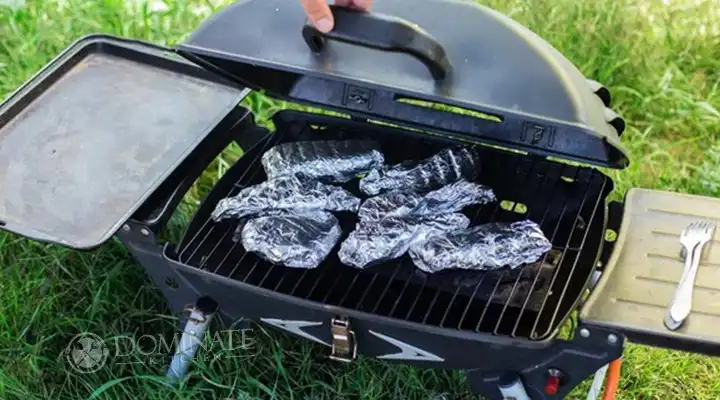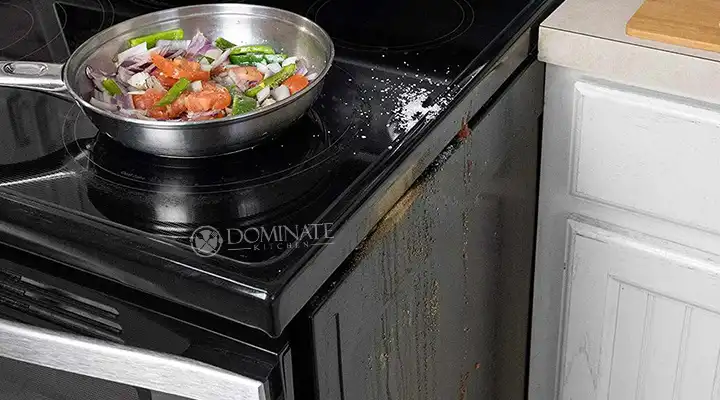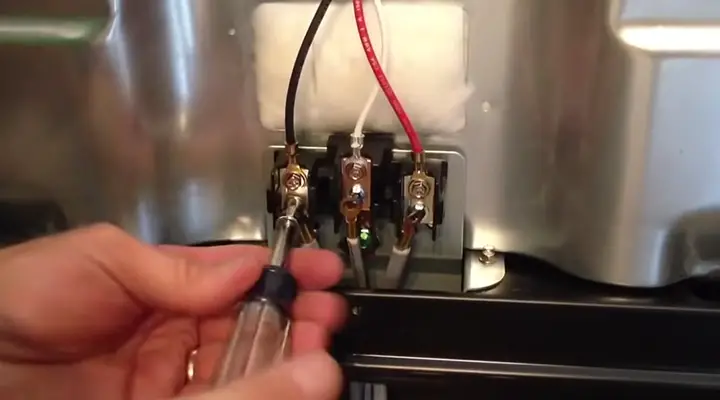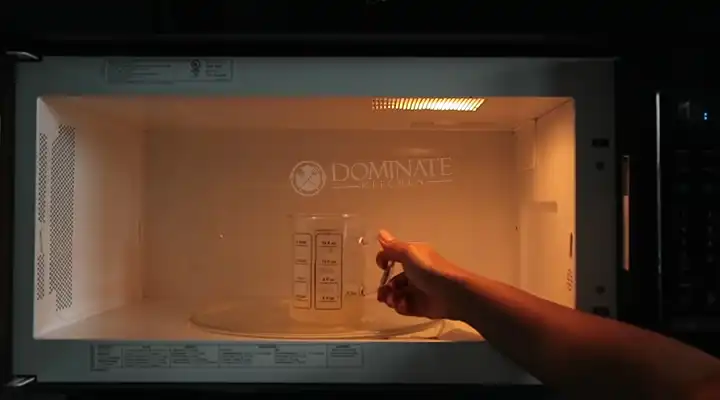How to Freeze Dry Candy? DIY Candy Preservation
Freeze drying, also known as lyophilization, is a clever preservation technique that can transform the texture of candies. By freezing and then reducing surrounding pressure, moisture is removed through sublimation while structural integrity remains intact. The result – delightfully crisp, concentrated sweets that can last months or even years if stored properly.
This complete guide covers all you need to start freeze-drying candy at home. All you need to do is take a few minutes and stick to the post till the end. So, let’s begin, shall we?
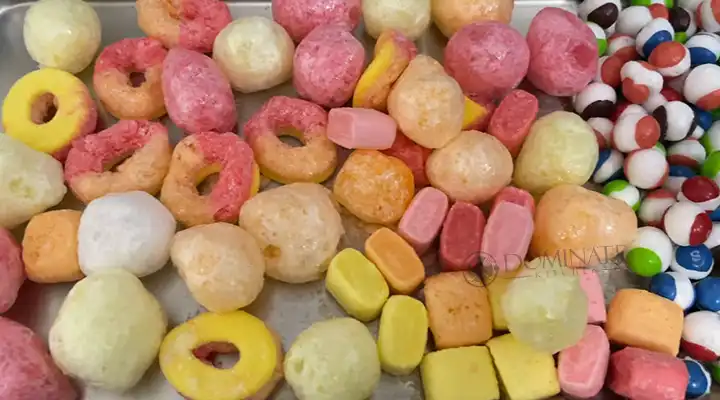
Things You’ll Need to Freeze Dry Candies
A few key pieces of equipment are required to effectively replicate the commercial freeze-drying candy process –
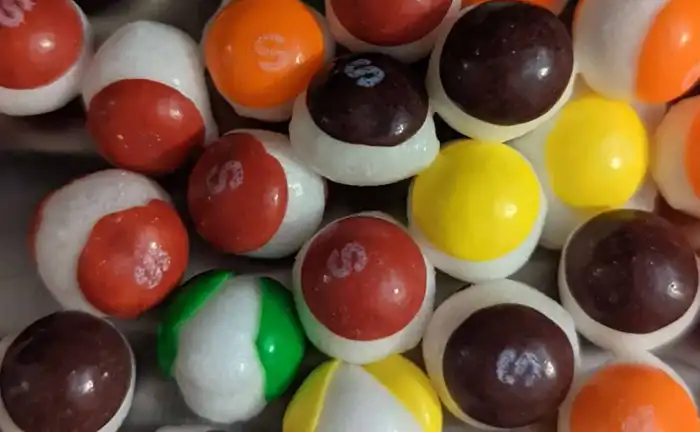
An ultra-low temperature freezer unit able to reach temperatures around -40°C/-40°F or ideally colder is essential. Most standard kitchen freezers only get to -18°C which is not sufficient. Consider renting laboratory-grade equipment that can reach the optimum -50°C temperature range. Alternatively, the dry ice technique of surrounding candy with insulated dry ice to induce rapid freezing works quite well too.
You’ll also need sealable containers like thick plastic vacuum bags or wide-mouthed Mason jars. Candy must be vacuum sealed with all air removed before the drying process, so the containers facilitate this while being able to withstand ultra-low temperatures.
Connecting a vacuum pump to the sealed candy containers enables surrounding pressure to be reduced, around 0.1 mBar ideally. This allows frozen moisture inside the candy to transition directly from ice to vapor and sublime out of the candies once in the vacuum bags or jars. So the pump is essential for the freeze-drying effect.
Lastly, insulated gloves for handling frozen candy and/or dry ice are strongly recommended to protect yourself from the bitterly cold temperatures used.
How to Freeze Dry Your Candy: Step-By-Step
There are two main methods that can be used – the deep freezer technique and the dry ice technique. But both involve the same underlying freeze-drying concept.
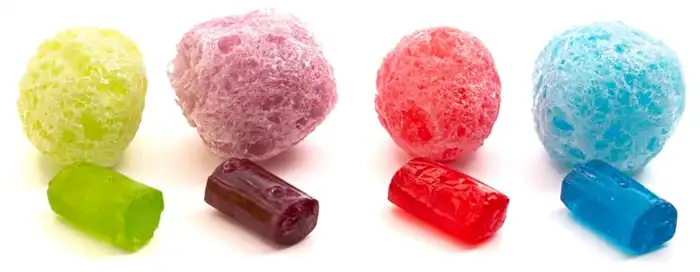
Freezer Method
Freeze drying with an ultra-low temperature freezer involves –
Step 1: Laying pieces of candy to be preserved in a single layer on a lined tray or baking sheet, without overcrowding them.
Step 2: Vacuum sealing the tray of candy inside a bag or container to remove all excess air.
Step 3: Freezing overnight or until completely frozen solid at the minimum temperature the freezer can reach, ideally -40°C or colder.
Step 4: Remove the solidly frozen candy and immediately transfer it to jars or bags suitable for vacuum pumping.
Step 5: Connect the candy containers to a vacuum pump and switch it on to reduce internal pressure.
Step 6: Wait 1-3 days as air pressure drops, allowing the frozen water content in the candy to turn from ice directly into vapor which is sucked out by the vacuum pump. This leaves microscopic pores in place of where ice crystals used to be.
Step 7: Check if the candy is fully dried and crispy when pressure returns to normal, with brittle textures indicating complete moisture removal.
Dry Ice Method
The dry ice technique involves –
Step 1: Wear insulated gloves to handle the dry ice safely.
Step 2: Place a layer of dry ice pellets or blocks in the bottom of a small insulated cooler or foam container.
Step 3: Putting pieces or batches of candy to be preserved in vacuum bags or jars. Removing excess air from the containers.
Step 4: Burying the sealed candy 3-4 inches deep in the layer of dry ice and securing the insulated lid. Allowing it to sit for 2-4 hours, allowing time for thermal equilibrium.
Step 5: Remove the frozen candy containers once fully hardened and connect quickly to the vacuum pump.
Step 6: Turn on the pump for 24-48 hours until the vacuum pressure indicator shows complete moisture removal. Checking candy pieces are completely crisp when finished.
Storing Freeze Dried Candies
Once candy has turned brittle and frosty white indicating successful freeze drying, it must immediately be transferred to and stored in air-tight containers. Mason jars or thick plastic bags with secure zipper seals work great. This prevents any atmospheric moisture from being reabsorbed.
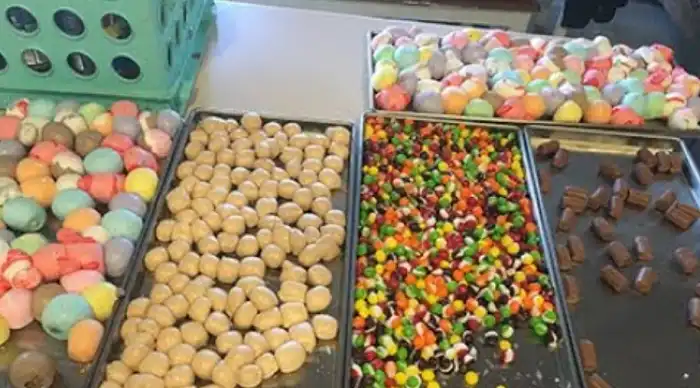
If adequately sealed and kept somewhere clean, dark, cool, and dry, freeze-dried candies can last for many months or even years without quality deterioration. The complete moisture removal through sublimation prevents any bacterial growth which could cause candy spoilage.
Over extremely extended time periods, some decline in texture and flavor can occur as freeze-dried candies may absorb minimal external moisture. However, the shelf life is drastically extended compared to traditionally stored candy.
Which Method is Most Effective and Why?
The dry ice technique generally produces superior freeze-drying results compared to standard freezer methods. By burying candy deeper in an insulated dry ice container, temperatures down towards -75°C can be reliably reached when allowing sufficient equilibrium time.
This more rapid, intensive freezing minimizes the formation of large damaging ice crystals. It means moisture is able to sublime more quickly and thoroughly from the solid frozen state when vacuum pressure is later reduced.
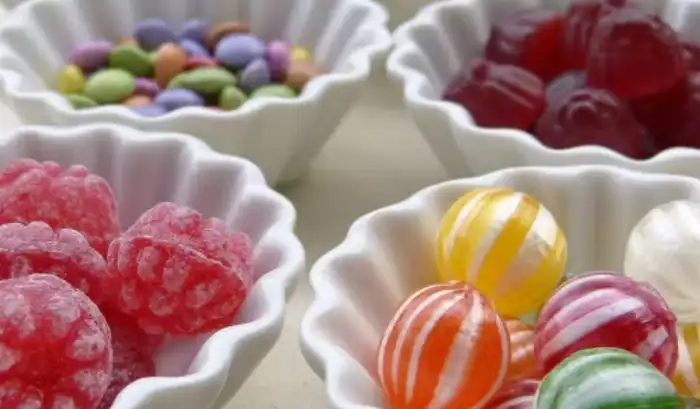
Faster freezing of candies down to lower temperatures translates to less cellular damage and thereby better preservation of original candy textures. It also means there is less chance of some residual moisture remaining internally within pieces after pumping. So dry ice freeze-drying candy produces pleasingly uniform crispness.
However, for accessibility and convenience purposes, using an affordable ultra-low freezer that reaches -40°C temperatures can certainly get the job done almost as effectively. Home equipment freeze-drying just tends to require longer freezing and primary drying duration to fully remove all ice content.
What’s Freeze Drying and Why You Should Try It
Beyond crystallized candy experiments, freeze-drying is an ingenious food preservation technique. It works through the concept of sublimation – removing surrounding pressure to enable water molecules to transition directly from frozen solid to vapor while skipping the liquid stage entirely.
Candy is first rapidly frozen, immobilizing soluble molecules leached by ice formation and solidifying structural matrices. Pressure is then lowered, providing conditions for ice to ‘skip’ melting and immediately turn to vapor which diffuses out, leaving behind a porous sponge-like structure.
This means moisture is extracted while delicate Candy porous shapes are locked in place. And without moisture, no bacterial growth can occur leading to drastically extended shelf lives compared to traditional candy storage.
The benefits of freeze-drying include –
a) Ultra long-term storability without preservatives
b) Retention of original candy shapes, colors, and general structural integrity
c) Light, fun crispy, and crunchy burst-in-the-mouth textures
d) Flavor and aroma intensity amplification with no diluting water
e) Customized candy adventuring by adding your own choice of juices, spices, herbs, or alcohol
So for crystalline candy experiments, locking your current favorites long term, or developing whacky new flavor ideas – freeze-drying creates a world of possibilities no chocolatier should miss!
What Kind of Candies Work Best for Freeze-Drying?
The most suitable candies for freeze-drying feature existing aeration, pockets, or spongey/crisp elements as part of their normal texture. These structural traits help retain pleasing textures after drying. Top contenders include –
- Marshmallows – turn exceptionally crisp and moreish
- Foamed candies – retain crunch with concentrated sweetness
- Gummy candies – keep signature chew without sticky moisture
- Popcorn – explodes with ultra-crispy bite
- Pretzels – hollow pockets filled with dry frosty crystals
- Wafers – thin constructions turn fantastically crisp
- Nougat – becomes frosty light and whipped
- Sugared nuts – brittle is boosted to new heights of crunch
- Candy corn – keeps its iconic shape while crispy-crunchy
Dense, thick candies with substantial moisture content like plain chocolates, fudges, fruit jellies, and chewy caramels tend to end up quite dense and less crisp after drying. But creativity can transform them into new unique delights.
Flavor Ideas for Freeze Drying: Enhance the Taste
There’s a fine option that you can utilize before freeze-drying. You can infuse your candy creations with extra flavors for sensory excitement using –
- Fruit Purees: Berry smoothies, pineapple, zesty orange, tart cherry, or lemon pack a flavor-filled punch
- Spices: Cinnamon red hots, ginger zing, warming nutmeg, or perhaps spicy Moroccan-style
- Herbs: Cool peppermint, spearmint, aromatic lavender or matcha green tea
- Savory: Balsamic vinegar candy? Teriyaki, hot sauce, or Worcestershire flavors
- Sweet: Honey, salted caramel, maple, hazelnut or amaretto
Mix and match multiple flavors, and allow time to infuse before freeze-drying for intensified tastes and colorful creations. Sweet and spicy? Herby and hot? The world’s your oyster!
People Also Ask
- Can you freeze-dry any candy successfully?
While freeze-drying is possible with any candy, the best results come from candies with existing crispiness, aeration, or chewiness. Types like gummies, marshmallows, foams/nougats, and brittle brittles achieve excellent dried textures and concentrated flavors.
- What temperature is best for freeze-drying candy?
The colder the better! For best candy freeze drying, aim for ultra-low temperatures under -40°C/-40°F to completely halt microbial and enzymatic activity. Commercial freeze driers use around -50°C. With home techniques, the coldest temperature achievable is ideal.
- Does freeze dried candy need refrigeration after drying?
If stored properly in sealed containers, freeze-dried candy does not need any refrigeration or freezing. Full moisture removal means bacterial/enzymatic degradation cannot occur at room temperature. Simply keep them in air-tight jars or bags in a clean, dark cupboard or pantry environment.
End Note
From stellar fruit leather to spicy chili chocolate, freeze-drying opens up creative culinary possibilities for conserving and concentrating candy flavors long term. While specialized equipment is needed, the textural delights and personalized tasty adventures make it well worth the effort for any confectionery fanatic. So embrace your inner sweet-toothed scientist and start freeze-drying unique candy creations today!



